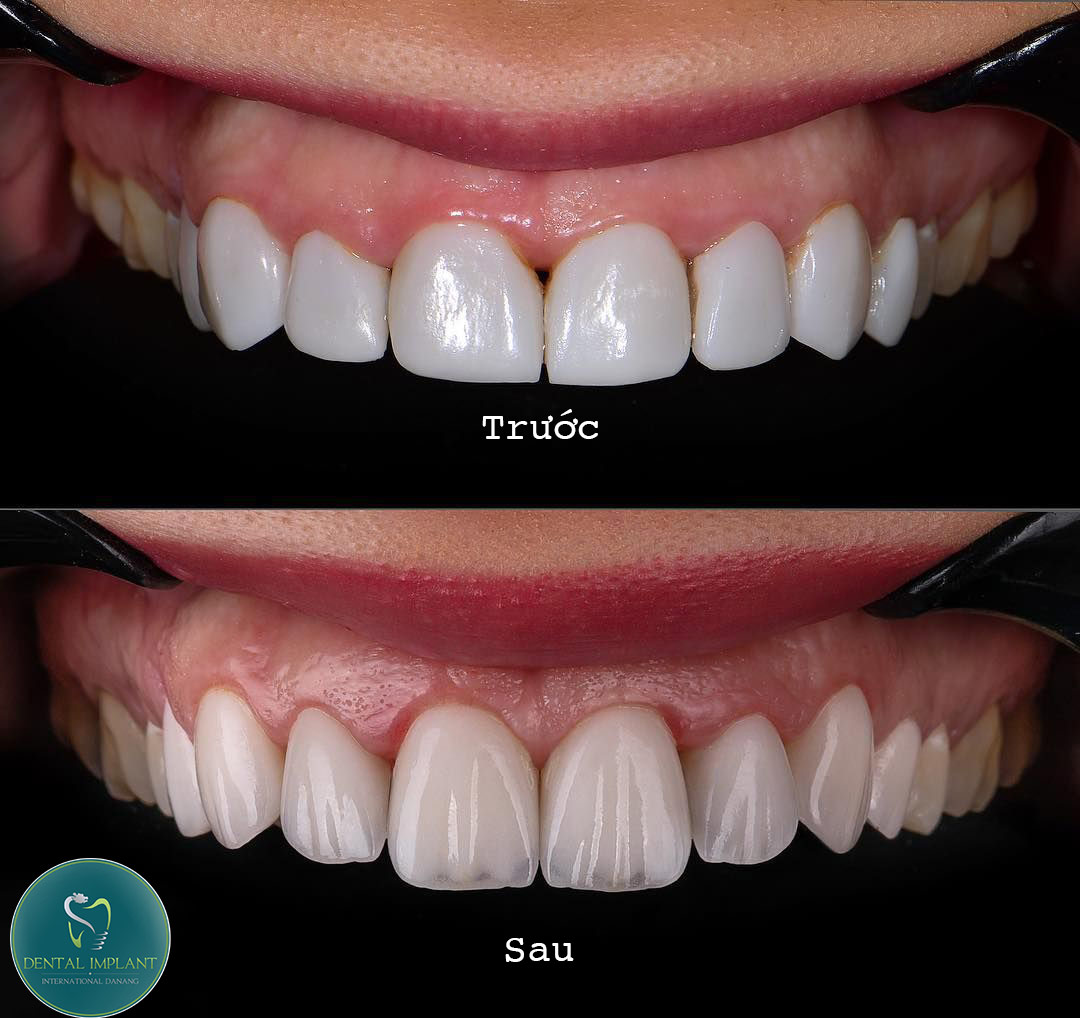Porcelain veneer is an aesthetic restoration method using a thin layer of porcelain, only 0.3 – 0.5 mm, glued to the outer surface of the tooth with specialized dental cement.

Porcelain veneers are very thin, only from 0.3 to 0.5 mm
If you were not confident with your smile due to yellowed teeth, deformed shape or sparse teeth, the first thing that comes to your mind or is consulted the most is all-ceramic dental restorations.
These all-ceramic teeth will “guarantee” make you confident with a whiter teeth; however, there are a few things you need to know before choosing this method:
– The tooth must be grinded enough to place a crown (usually at least 1 – 1.5 mm of enamel is required). Because of the spreading of minimally invasive dentistry, the choice of all-ceramic restorations go after the choice of porcelain veneers for the front teeth.
– Risk of tooth sensitivity: enamel is like an outer layer covering the sensitive and vulnerable tooth pulp. Grinding a lot of enamel bring a risk of causing sensitivity.
It is claimed that porcelain veneers are a modern aesthetic trend because of many advantages:
– Minimum grinding: about 0.3 – 0.5 mm of enamel, minimizing the risk of tooth sensitivity even for those who has low pain threshold.
– Maximum aesthetic improvement: In the past, there was no clinic that be capable of making a aesthetic and durable restoration with a size of only 0.3 – 0.5 mm. With the development of technology, nowadays clinics are able to make porcelain veneers with high stability and accuracy, simulating almost exactly the shape and color of real teeth.
Normally, there are 2 types of veneers used:
– Composite veneer is made from composite resin. The advantage of this veneer is cheapness and ease to fix but still ensures the basic aesthetics. The disadvantage is that it can be yellowed and easier to chip because of its composite resin.
– Porcelain veneer is made entirely from porcelain that is processed and refined at high temperature. This veneer involves all outstanding advantages mentioned above. However, it has the high cost.

Porcelain veneers can completely change your smile
The first appointment:
– Examine and assess the general condition of the teeth. Acknowledging the patient’s needs and desires.
– Evaluate by taking a panoramic film (Panorex).
– Clean teeth
– Take photos to record the current aesthetic and smile lines
– Design and provide image treatment results using digital smile design technology (Digital Smile Design)
– Proceed to take silicone impressions of the patient’s upper and lower jaw.
The second appointment:
Carry out tooth grinding: tooth enamel is grinded from 0.3 to 0.5 mm. Depending on the requirements, the tooth grinding will be calculated meticulously and accurately
– Take a real tooth silicone impression after grinding
– Make temporary teeth from the available wax samples (wax-up) from the impression at the first appointment. This makes it easier for the patient to visualize the final restoration result and can directly correct the unsatisfactory positions.
– Take the silicone impression after editing according to the patient’s request, and help to communicate the patient’s requirements to the lab.
The third appointment:
– Try on veneers, aesthetics fine-tune.
– Cement the porcelain veneers after the patient’s agreement
From 6,000,000 to 7,000,000 per unit depending on the type of porcelain.
